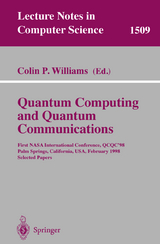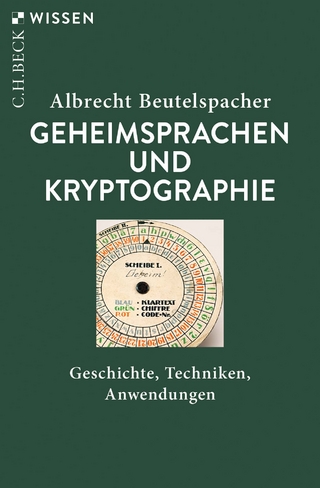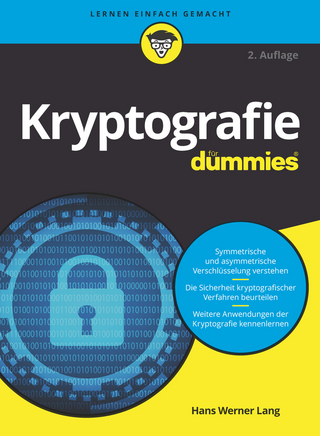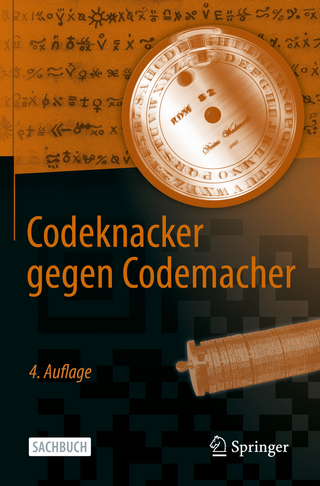Quantum Computing and Quantum Communications
Springer Berlin (Verlag)
978-3-540-65514-5 (ISBN)
Entanglement and Quantum Algorithms.- Multi-particle Entanglement via Two-Particle Entanglement.- Quantum Wavelet Transforms: Fast Algorithms and Complete Circuits.- Quantum Computation of Fluid Dynamics.- Quantum Entanglement and the Communication Complexity of the Inner Product Function.- Quantum Recurrent Networks for Simulating Stochastic Processes.- Correlation between Correlations: Process and Time in Quantum Networks.- Quantum Effects in Algorithms.- Automated Design of Quantum Circuits.- Quantum Search on Structured Problems.- Generalized Grover Search Algorithm for Arbitrary Initial Amplitude Distribution.- Quantum Database Search by a Single Query.- Quantum Computer Can Not Speed Up Iterated Applications of a Black Box.- Quantum Resonance for Solving NP-complete Problems by Simulations.- Computational Complexity and Physical Law.- The Hidden Subgroup Problem and Eigenvalue Estimation on a Quantum Computer.- A Diakoptic Approach to Quantum Computation.- Quantum Cryptography.-Practical Free-Space Quantum Cryptography.- Quantum Cryptography, Eavesdropping, and Unsharp Spin Measurement.- Quantum Copying and Quantum Information Theory.- Information-Theoretic Aspects of Quantum Copying.- Universal Optimal Cloning of Qubits and Quantum Registers.- Entanglement of Assistance.- What Information Theory Can Tell Us About Quantum Reality.- Quantum Generalization of Conditional Entropy and Information.- Accessible Information in Multi-access Quantum Channels.- Capacities of Quantum Channels and Quantum Coherent Information.- Strengthened Lindblad Inequality: Applications in Non-equilibrium Thermodynamics and Quantum Information Theory.- Quantum Error Correction and Fault-Tolerant Quantum Computing.- Fault-Tolerant Quantum Computation with Higher-Dimensional Systems.- Quantum Convolutional Error Correction Codes.- On the Existence of Nonadditive Quantum Codes.- Quantum Error Correction Is Applicable for Reducing Spatially Correlated Decoherence.- Topological Quantum Computation.- Embodiments of Quantum Computers.- NMR GHZ.- Quantum Computing Using Electron-Nuclear Double Resonances.- Physical Implementations for Quantum Communication in Quantum Networks.- An Optical Approach to Quantum Computing.- Quantum Computation with Linear Optics.- Decoherence Control for Optical Qubits.- Adiabatic Controlled-NOT Gate for Quantum Computation.- Trapped Ion Quantum Computer Research at Los Alamos.- Arrays of Elliptical Ion Traps for Parallel Quantum Computing.- Simulating the Effect of Decoherence and Inaccuracies on a Quantum Computer.- Implementation of Quantum Controlled-NOT Gates Using Asymmetric Semiconductor Quantum Dots.- Spatiotemporal Dynamics of Quantum Computing Solid Dipole-Dipole Block Systems.
| Erscheint lt. Verlag | 26.5.1999 |
|---|---|
| Reihe/Serie | Lecture Notes in Computer Science |
| Zusatzinfo | XII, 480 p. |
| Verlagsort | Berlin |
| Sprache | englisch |
| Maße | 155 x 235 mm |
| Gewicht | 640 g |
| Themenwelt | Informatik ► Theorie / Studium ► Kryptologie |
| Schlagworte | algorithms • Communication • cryptography • Hardcover, Softcover / Informatik, EDV/Informatik • HC/Informatik, EDV/Informatik • Informatik • Information • Information Theory • Quanteninformatik • Quantenphysik • Quantentheorie • Quantum Algorithms • Quantum Communications • Quantum Computing • Quantum Cryptography • Quantum Information Theory |
| ISBN-10 | 3-540-65514-X / 354065514X |
| ISBN-13 | 978-3-540-65514-5 / 9783540655145 |
| Zustand | Neuware |
| Haben Sie eine Frage zum Produkt? |
aus dem Bereich




